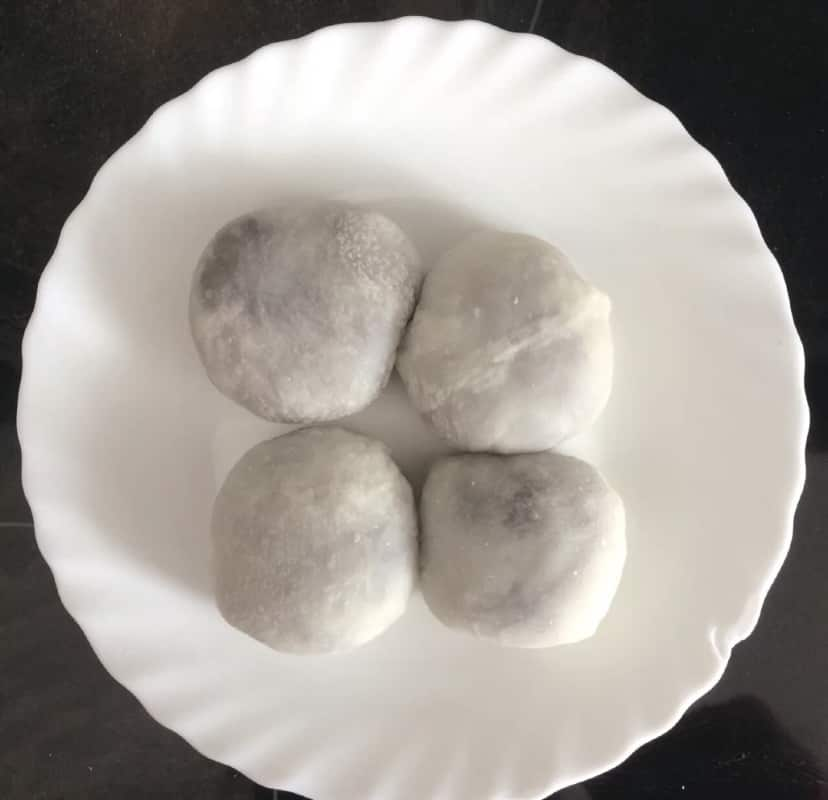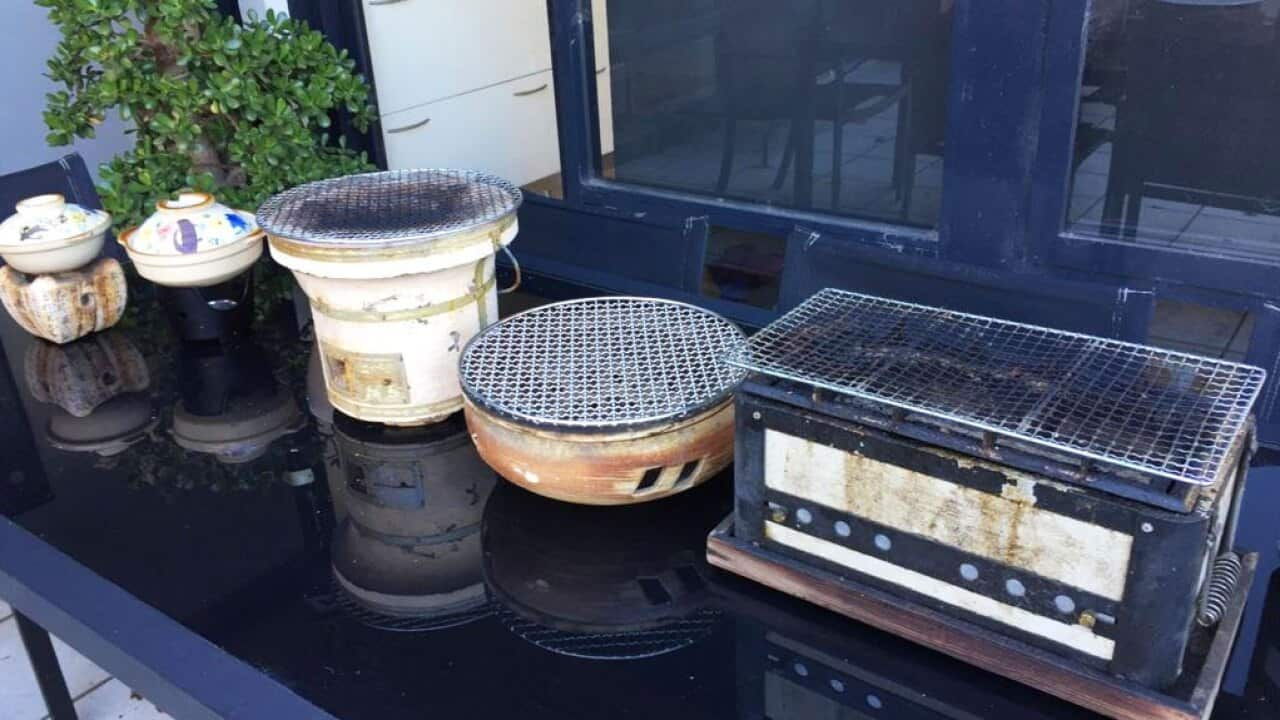You can find plenty of sweet rice cakes across Asia. There's China's nuomici and dagao and Korea's injeolmi and gyeongdan, and of course, Japan's mochi.
I didn't try mochi until I lived with my Taiwanese landlord while I was at university. My landlord told me that traditionally, sweet rice cakes in Taiwan were called doushu, but since Japan's control of Taiwan in the 19th century, they've been referred to as mochi.
I lived with my landlord for over three years. During this time, she took me to try various Taiwanese dishes in many places. Mochi was one of the popular ones. There are various mochi flavours. My favourite ones include matcha (green tea), peanut and daifuku. Daifuku (also called dafu) feature a semi-sweet red-bean paste. Plain mochi is also tasty, but my preferred mochi is covered in butter and gently pan-fried for a couple of minutes. They taste even better with whipped cream on the side and served while hot.
There are various mochi flavours. My favourite ones include matcha (green tea), peanut and daifuku. Daifuku (also called dafu) feature a semi-sweet red-bean paste. Plain mochi is also tasty, but my preferred mochi is covered in butter and gently pan-fried for a couple of minutes. They taste even better with whipped cream on the side and served while hot.

You can learn to make mochi at home. Source: Angie Cui
Nowadays, mochi is a common dessert, but they can be a luxury. My friends in Hong Kong, who also loves mochi, say it can be pretty expensive over there. I have seen mochi in Asian grocery stores in Australia, but they're not always cheap either.
Plain mochi is also tasty, but for someone like me, it's better coated in butter and gently pan fried for a couple of minutes.
My former landlord told me that when she left Taiwan when she was 20, she couldn't find mochi in Australia, so she began making it at home. Daifuku was the first type of mochi that she taught me how to make. I thought this recipe would be easy, since daifuku are really just soft balls of pounded rice filled with a red bean paste. However, I was wrong.
When rice is battered, it becomes sweet and fluffy; that's what makes mochi addictive. It took me a few attempts to get this right. Once I had cooked the mochi dough, I then stuffed a small amount of red-bean paste into it; it worked well. Although it's messy to make mochi at home, you'll be impressed with the finished product.
I love to have daifuku as a quick snack. Though it was hard to get the rice balls right initially, compared with some other desserts, I now find mochi easy to make. It's also convenient to make mochi for a school lunch or picnic. And they're great to serve with tea or coffee.
I often store fresh daifuku in a cool, dry place and eat them within two days. I don't recommend keeping homemade daifuku for more than five days. When you're ready to make mochi at home, just follow my recipe. You can substitute red-bean paste with a filling of your choice.
Red bean-paste mochi (daifuku)
Makes 12
Ingredients
- ¾ cup glutinous rice flour (sticky rice flour)
- 100 g water or less
- 30 g (¼ cup) sugar
- 1 cup potato starch or cornstarch
- 1 ½ cup red-bean paste (ready-made from Asian grocery stores)
Method
- Combine all ingredients in a bowl (except the red-bean paste) to make mochi dough.
- Slowly add water and mix well.
- - If you use a microwave to cook the rice, put the bowl of mixture in the microwave and heat on high for 1 minute. Then, stir with a silicone spatula. Cover again and cook for another minute. Repeat the same step 3 times.
- If you use a steamer to cook the dough, put the bowl of mixture into a steamer then cover and cook for 15 minutes. Halfway through cooking, stir with a wet silicone spatula and cover again. The dough is cooked if the colour of the mochi changes from white to shining bright. - Cover a clean surface, such as a clean kitchen bench, with parchment paper and sprinkle it with lots of potato starch. Also, sprinkle it on top of the mochi dough. Make sure to put as much potato starch as you want on the dough and the rolling pin. You can also apply some oil on the rolling pin if you want, this can prevent it all from sticking.
- Transfer the mochi dough with parchment paper onto a large baking sheet. Refrigerate for 15-20 minutes until the mochi is set. Make sure the mochi is thin and flat.
- Take the mochi dough from the refrigerator and cut out 12 discs with a 9cm biscuit cutter.
- Scoop out some red-bean paste and form a ball. Put this in the centre of one of the discs of mochi dough. Think of the circumference of the disc as equally divided into four parts. Bring one part of the disc's circumference into the centre, so that it rests on top of the red-bean paste, in the centre. Then bring the remaining three parts into the centre in the same way, like you would fold a pocket. Pinch the dough at the centre, to form a seal. Then, bring the remaining parts of the disc's circumference into the centre and pinch the dough at the centre again, so that the centre seal is tight. Repeat this for the remaining 12 discs of dough to make 12 mochi balls.
- Put the leftover potato starch over the mochi and they're ready to eat, no need to recook!
Note:
- The purpose of the potato starch is to prevent the mochi dough from sticking. Also, a good mochi always tastes a bit starchy.
- Keep the daifuku mochi in an airtight container and store it in a cool and dry place. It's best to consume them in two days.
FOOD OF EAST ASIA

This bun filling is honoured by a work in Taiwan's national museum
Share
SBS Food is a 24/7 foodie channel for all Australians, with a focus on simple, authentic and everyday food inspiration from cultures everywhere. NSW stream only. Read more about SBS Food









